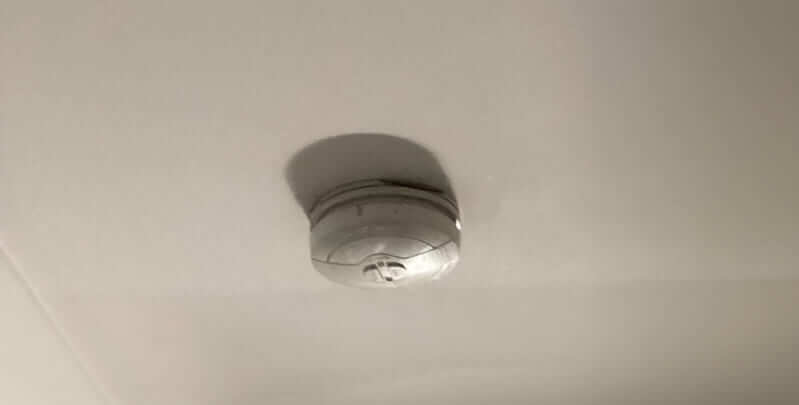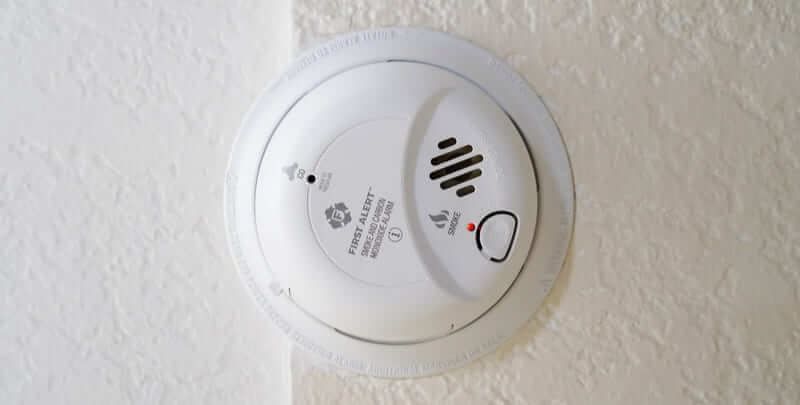Why Do My Smoke Alarms Keep Going Off For No Reason?

Smoke detectors play a critical role in maintaining fire safety and overall safety within the home.
By detecting early signs of fire, they provide crucial minutes for evacuation and response, potentially saving lives and property. Yet, understanding why smoke and fire alarms can frequently trigger without an apparent reason is essential for maintaining both safety and sanity, enhancing system efficiency.
False alarms can be more than just a nuisance. They can undermine confidence in the effectiveness of a smoke alarm, leading to it being disabled or ignored—actions that can have dire consequences. Common reasons for these false alarms include dust, humidity from a hot shower, or burnt food. Knowing these triggers helps maintain the unit’s reliability. Let’s look into it further.
Common Reasons Why Smoke Alarms Keep Going Off
Smoke detectors work to detect traces of smoke and sound an alarm to alert the occupants of your home. However, this sensitivity can sometimes lead to false alarms, which are activations caused by a variety of other factors. Among the most common cause of false alarms are:
- Dust and debris: Over time, dust and other airborne particles can accumulate on the sensors of your smoke alarm. Regular cleaning and maintenance are essential to prevent this build up and ensure the sensors can detect smoke accurately without interference.
- Steam and high humidity: In many houses, your smoke detector can be triggered by steam from hot showers or boiling water. High humidity can cause condensation on the sensors, mimicking the presence of smoke.
- Insects and small bugs: Small insects can enter a smoke alarm, particularly in warmer months. Their presence inside the unit can interfere with the sensor’s operation.
- Low battery or faulty power supply: A low battery in a smoke detector can cause it to chirp or even trigger a false alarm. Similarly, a malfunction in the electrical current supplied to hard-wired units can result in false alerts.
- Aerosol sprays and other chemicals: The use of aerosol sprays, such as deodorants, paints, or air fresheners near your smoke detector can lead to false alarm. The particles emitted from these sprays can be detected as smoke by the unit.
- Wet paint: Chemical compounds designed to keep paint wet can release airborne chemicals that interfere with your smoke alarm, leading to false alerts. These compounds are necessary for maintaining the paint’s consistency but can be problematic near sensitive devices.
- Faulty units: Sometimes, the smoke detector itself may be defective. Regular testing and the use of the reset button can often diagnose such issues. If problems persist, replacing the unit may be necessary to maintain optimal performance and home safety.
By addressing these common causes, homeowners can significantly reduce the frequency of false alarms.

Differentiating Between Smoke Alarm Types
Smoke detectors come in various types, each designed to detect different types of smoke and fire in different ways.
- Ionisation smoke detectors: Ionisation alarms are particularly sensitive to flaming fires—those that spread rapidly and produce little smoke. They work by detecting changes in an electrical current passing through ionised air. However, this sensitivity means they are more prone to false alarms from cooking fumes or steam, which can disrupt the electrical current similarly to fire smoke.
- Photoelectric smoke detectors: These detectors are better at sensing smouldering fires, which burn slowly and produce more smoke before flames appear. Photoelectric alarms use a light sensor; when smoke enters the unit, it disrupts the light beam, triggering the alarm. This type makes them less likely to cause false alarms from kitchen heat but more responsive to smouldering upholstery or overheated wiring.
- Combination smoke and carbon monoxide (CO) alarms: For comprehensive safety, combination units detect both smoke and CO, a deadly gas that can accumulate from burning fuels. These detectors are essential in homes that use gas heaters, stoves, or fireplaces and provide an all-in-one safety solution.
Incorporating the right type of smoke detector in the appropriate locations around the house can significantly enhance fire safety and reduce unnecessary disruptions from false alarms.
Maintenance Tips to Prevent False Alarms
Proper smoke alarm maintenance is crucial not only for ensuring it functions properly during an emergency but also for preventing annoying and potentially dangerous false alarms. Here are some essential tips to keep your smoke alarm in top shape.
- Regular cleaning: Dust and debris are among the most common causes of false alarms. Use a soft brush attachment on your vacuum to gently clean the exterior vents of every smoke alarm in your home every few months. This removes particles that could interfere with the unit’s sensors.
- Battery maintenance: A low battery can send false signals alerting to the presence of smoke when there isn’t any. Most smoke alarms will chirp to indicate a low battery, prompting you to install a new battery. Make it a habit to replace the batteries at least once a year or as recommended by the manufacturer.
- Test your alarms regularly: Testing your fire alarms monthly is essential. Use the test button on each detector to ensure it is working correctly. This regular testing can help identify any units that may be malfunctioning and need further attention or replacement.
- Avoid painting over detectors: Never paint over your smoke alarm as paint can clog the sensors and prevent them from working correctly. Always cover the unit carefully when painting your ceilings or walls.
- Check the circuit breaker: For hard-wired smoke detectors, ensure that your circuit breaker is functioning correctly and that the detector is securely connected to your home’s electrical system. A tripped breaker or a disconnected alarm can lead to failure in detecting smoke or fire.
By following these maintenance tips, you can greatly reduce the likelihood of false alarms and ensure your smoke alarm is ready to alert you in case of an actual fire.

When to Replace Your Smoke Alarms
Smoke alarms and fire alarms are critical components of home safety but they do not last forever. Knowing when to replace them can ensure that your home remains a safe environment, free from the risks of undetected fires or CO exposure.
- Recognise the lifespan: Most smoke detectors and fire alarms have a lifespan of approximately 10 years. After this period, the sensors can degrade and become less effective at detecting smoke or heat, which significantly increases the risk of a malfunction. Check the manufacture date on the back of your unit and plan to replace it every decade.
- Listen for end-of-life signals: Many modern smoke detectors and carbon monoxide alarms are equipped with a hush button that also serves to test the unit. If an alarm chirps regularly despite a new battery or proper connection to the power supply, it might indicate that it is reaching the end of its useful life.
- Post-exposure replacement: If your smoke alarm or fire alarm has been exposed to large amounts of smoke, such as from a significant fire, or has been painted over accidentally, it should be replaced. These exposures can impair the detector’s internal sensors, compromising its effectiveness.
- Upgrade for better technology: Technology evolves, and newer models may offer improved detection methods and additional features like integrated carbon monoxide detection. Upgrading older models professionally can enhance your home’s safety infrastructure.
Regularly updating your smoke alarms and fire alarms is a small but crucial step in maintaining your safety and ensuring your home meets current fire safety standards.
Ensure Your Smoke Detectors Function Properly
Ensuring that your smoke alarms are in optimal working condition is crucial for your home’s safety. Regular maintenance, such as cleaning and battery replacement, helps prevent false alarms – often caused by factors like high humidity in bathrooms or accidental paint overspray. Testing your fire alarms regularly ensures they produce the correct sound when triggered and remain reliable in an emergency.
Remember, functioning smoke and heat detectors are your first line of defence in fire safety. By staying vigilant about maintenance and replacement, you safeguard not just your property, but the lives of everyone in your household.
Please note: This information is provided for advice purposes only. Regulations differ from state to state, so please consult your local authorities or an industry professional before proceeding with any work. See After Hours Electrical’s Terms & Conditions here.